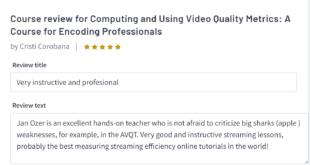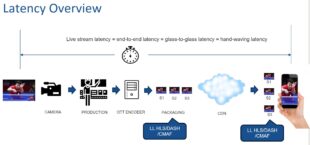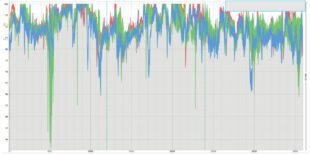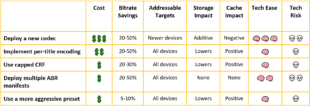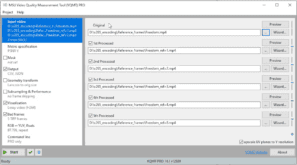I recently spoke with Eric Schumacher-Rasmussen, the Chief Marketing Officer at id3as, about their flagship product, Norsk. In our discussion, Eric detailed Norsk’s functionalities, how it operates, and its distinct advantages for media publishers and broadcasters at scale. Below is the video of our conversation, accompanied by a summary of the key points we touched on. Video 1: The …
Read More »TimeLine Layout
March, 2024
-
28 March
Norsk for Broadcasters: Interview with id3as’ Steve Strong
Recently, I spoke with Steve Strong, id3as’ co-founder and director, about Norsk’s suitability for broadcasters. Below is the video and a summary of the conversation. Overview By way of background, many traditional broadcasters are transitioning from legacy platforms to IP-based systems. A key player facilitating this shift is id3as with their new product, Norsk. Briefly, Norsk is a suite of …
Read More » -
22 March
New Five Star Review for Video Quality Metrics Course
The Computing and Using Video Quality Metrics course teaches encoding pro to compute and use video metrics like VMAF, PSNR, and SSIM.
Read More » -
12 March
The Quality Cost of Low-Latency Transcoding
While low-latency transcoding sounds desirable, low-latency transcode settings can reduce quality and may not noticeably impact latency. Reducing latency has been a major focus for many live producers, and appropriately so, particularly for events that viewers can watch via other media, like sporting events available through satellite or cable TV. However, it’s important to understand that transcoding latency contributes minimally …
Read More » -
7 March
NAB Session on AI in Video Streaming
Like most encoding professionals, I’ve followed AI-related streaming advancements for the last few years. I’m presenting a session entitled “Beyond the Hype: A Critical Look at AI in Video Streaming” at Dan Rayburn’s Streaming Summit at NAB in Las Vegas on Monday, April 15, from 1:30 PM to 2:00 PM PST (room W110). I will cover ingest to playback, including …
Read More » -
7 March
Jan Ozer Becomes Unrestricted Free Agent
Watch out Saquon! Sorry for the spring training, pre-combine sports reference, but it seems appropriate. I’m parting company with NETINT effective March 30, 2024. I want to thank CEO Alex Liu and my boss, Mark Donnigan, for the opportunity to work with NETINT for the last 18 months. One of my initial responsibilities was developing NETINT’s editorial strategy and increasing …
Read More »
February, 2024
-
28 February
Common Errors Obscured by Automated Video Quality Assessment
This article discusses five common errors that can be obscured by automated video quality assessment scripts and how to avoid them. Most video producers use some measure of automated testing in their codec or encoder comparisons or during normal production. While automated testing is essential, it’s easy to make the five following errors if you don’t spot-check your results. The …
Read More »
January, 2024
-
31 January
Five Codec-Related Techniques to Cut Bandwidth Costs
The mandate for streaming producers hasn’t changed since we delivered RealVideo streams targeted at 28.8 modems; that is, we must produce the absolute best quality video at the lowest possible bandwidth. With cost control top of mind for many streaming producers, let’s explore five codec-related options to cut bandwidth costs while maintaining quality. For each, I’ll consider the factors summarized …
Read More »
December, 2023
-
16 December
Single-Pass vs Two-Pass VBR: Which is Better?
Let’s start this article with a quiz regarding how the quality and encoding speed of two-pass VBR (variable bitrate encoding) compares to single-pass VBR (that’s right, VBR in both cases). Choose the best answer. Two-pass takes twice as long as single-pass but delivers significantly better overall quality. Two-pass takes slightly longer than single-pass but delivers significantly better quality. Two-pass takes …
Read More » -
3 December
Updated Lessons for Video Quality Metrics Course
We’ve updated several lessons in our Video Quality Metrics course, including some relating to the Moscow State University Video Quality Measurement Tool. The Moscow State University (MSU) Video Quality Measurement Tool (VQMT) is a tool that I use almost every day to analyze and compare encoded files. Our course, Computing and Using Video Quality Metrics: A Course for Encoding Professionals, …
Read More »
 Streaming Learning Center Where Streaming Professionals Learn to Excel
Streaming Learning Center Where Streaming Professionals Learn to Excel



